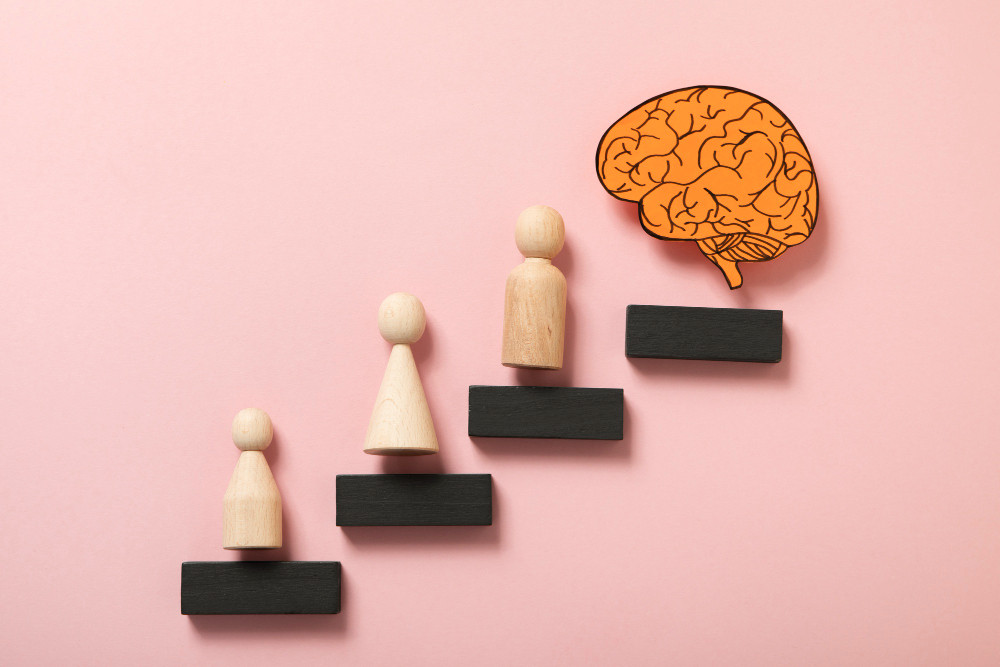Motivation: The Dynamic Force Fueling Our Actions

©️ Freepik
What drives you to exercise? What fuels the choice of studying medicine? What makes you wake up early every morning to go to work, and do the things you don’t necessarily love? What makes you read a good book? What is the force behind all our behavior? What is motivation?
Motivation, the driving force behind our actions, is the urge that pushes us toward our goals. It plays a crucial role in initiating, guiding, and maintaining goal-oriented actions. Moreover, motivation encompasses the biological, emotional, social, and cognitive forces that activate human behavior.
Motivation Theories
Throughout the course of history, psychologists have put forth various theories aimed at elucidating the factors that propel human behavior. These theories contribute to our understanding of the intricate interplay of factors that influence why individuals behave the way they do.

1. Instincts
According to the instinct theory of motivation, instincts motivate our behaviors. These instincts are ingrained and inherent patterns of behavior. Renowned psychologists such as William James, and Sigmund Freud, have identified fundamental human drives rooted in biology. These drives, including fear, cleanliness, and love, are crucial for an organism’s survival.
2. Arousal Levels
The arousal theory of motivation suggests that individuals actively seek out behaviors to maintain their optimal level of arousal. Those with lower arousal needs may seek out relaxing activities, such as reading. Individuals with higher arousal needs might seek stimulation to engage in exhilarating, thrill-seeking pursuits such as motorcycle racing.
3. Drives and Needs
Many behaviors, such as eating, drinking, and sleeping, find their cause in biology. Humans possess a biological need for essentials like food, water, and sleep, driving them to fulfill these needs. The drive reduction theory of motivation proposes that basic biological drives guide people’s behaviors toward fulfilling these fundamental needs.
4. Abraham Maslow’s Hierarchy of Needs
Abraham Maslow’s influential motivation theory revolves around a hierarchy of needs. Beginning with the fulfillment of basic physiological needs like food and shelter, the hierarchy extends to encompass safety and security, social needs, self-esteem, and self-actualization. This theory highlights the sequential fulfillment of these needs as a driving force behind human reason.
Components of Motivation
To achieve and sustain motivation for a goal, it’s essential to understand the three key components: activation, persistence, and intensity.
Activation: This involves making the initial decision to engage in a particular behavior. For instance, deciding to enroll in psychology courses to work towards earning a degree is an example of activation.
Persistence: This component pertains to the ongoing effort directed toward a goal, even in the face of obstacles. A practical illustration of persistence is consistently attending psychology classes despite feeling fatigued from staying up late the night before.

Intensity: This aspect focuses on the concentration and vigor invested in pursuing a goal. For instance, two students’ intensity levels can be differentiated by their study habits. One student may approach tasks with minimal effort, while the other actively participates in discussions, engages in regular studying, and seizes additional research opportunities, demonstrating a higher level of intensity.
These three components collectively shape the motivational process, influencing the likelihood of initiating, sustaining, and achieving success in pursuit of a goal.
Motivation Types
The two main types of motivation are frequently described as being either extrinsic or intrinsic. Extrinsic motivation arises from outside of the individual and often involves external rewards such as trophies, money, social recognition, or praise. Intrinsic motivation is internal and arises from within the individual, such as doing a complicated crossword puzzle purely for the gratification of solving a problem. Also, according to Very Well Mind, some researchers propose a third type of motivation: family motivation.
We will delve in more detail for each motivation type below.

1. Intrinsic Motivation
Intrinsic motivation drives individuals to engage in a behavior for the inherent satisfaction of the activity itself, without seeking external rewards or specific outcomes. You know when you love your job and you don’t care about a raise? That’s what intrinsic motivation is, in simple terms. It’s our motive to do things we love just for the sake of it. This form of motivation arises when individuals act without apparent external incentives. It means being driven by a genuine enjoyment of an activity. It’s the desire to explore, learn, and realize their potential.
Three key elements characterize intrinsic motivation: autonomy, purpose, and mastery. Individuals experience intrinsic motivation when they act independently, perceive meaningful significance in their efforts, and find satisfaction in acquiring expertise.
2. Extrinsic Motivation
Extrinsic motivation relies on external rewards, whether tangible, such as money, or intangible, like praise. Unlike intrinsic motivation, which stems from within the individual, extrinsic motivation exclusively centers on outside incentives. Without the prospect of a raise or bonuses, you won’t endure an extended period in a job if you are extrinsically motivated.
Individuals guided by extrinsic motivation continue tasks even if the tasks themselves aren’t inherently rewarding; for example, performing job tasks that may not be enjoyable to earn a wage. This motivation is associated with operant conditioning. Operant conditioning links behavior to consequences. When individuals experience positive outcomes following a behavior, they tend to repeat it. This is the essence of extrinsic motivation, where external rewards drive actions. For instance, getting a bonus for meeting work targets is a form of positive reinforcement that encourages continued effort. Operant conditioning sheds light on how external factors shape our behavior in different situations.

Impact of Extrinsic Reinforcement
It is already a well-known fact that intrinsically motivated behaviors last longer. Habits built on extrinsic motivation have the tendency to fail once the reward or punishment is removed. Moreover, according to Very Well Mind, research indicates that offering external rewards for activities already internally rewarding can diminish intrinsic motivation. This phenomenon is known as the overjustification effect. One can observe the impact of external rewards on intrinsic motivation in the context of reading. Suppose a child inherently enjoys reading books for the sheer pleasure of exploring imaginative worlds and stories. However, consistently rewarding the child with treats or prizes each time they finish a book carries the risk of diminishing their intrinsic motivation for reading.
In work settings, while extrinsic rewards like bonuses can enhance productivity, intrinsic factors significantly influence the actual quality of work. Intrinsically motivated individuals tend to be more creative, producing novel ideas and solutions.
On the other hand, carefully applying extrinsic motivation in the workplace, parenting, or education has the potential to transition individuals toward intrinsic motivation, where they perform tasks for enjoyment, fulfillment, or pride. A child can start reading because their parents pay them to, but may fall in love with a good book and never stop reading.
According to Verywell Mind, researchers caution that, while external rewards can enhance motivation in some cases, one should use them judiciously, especially with children, as their impact on intrinsic motivation requires further study.
What about you? Are you intrinsically or intrinsically motivated?
You might also want to read: This Single Factor Can Change Your Child’s Life


